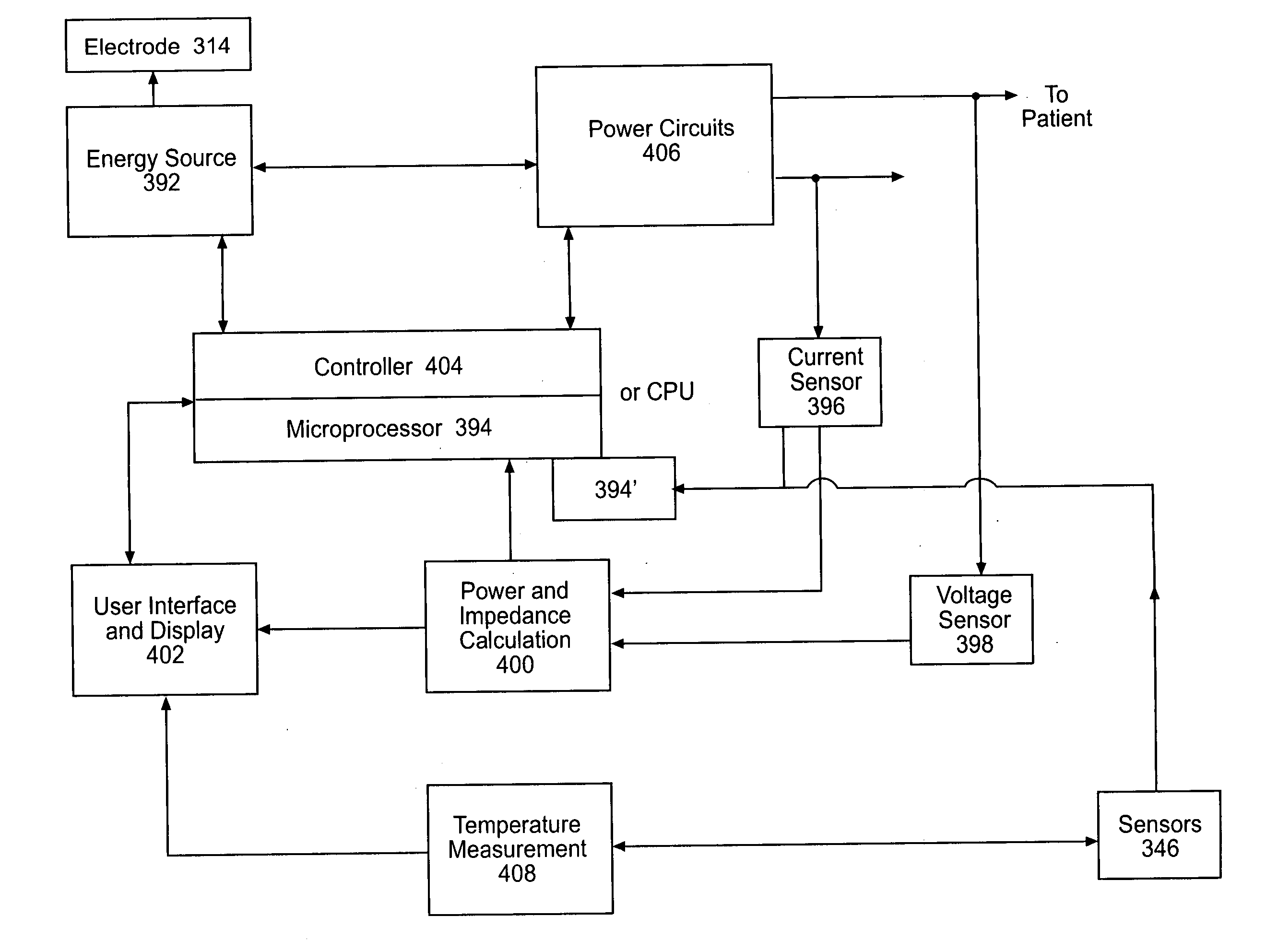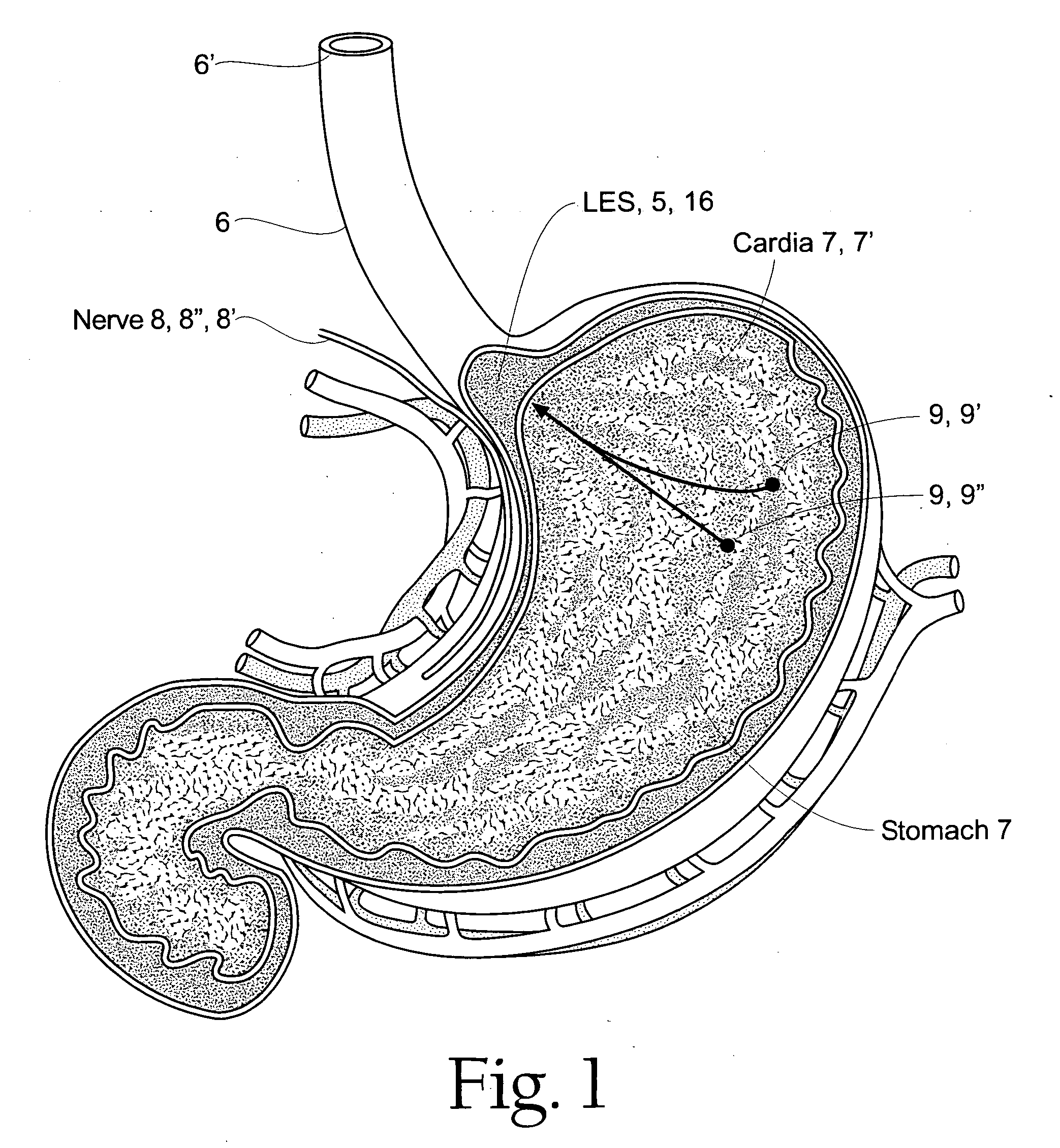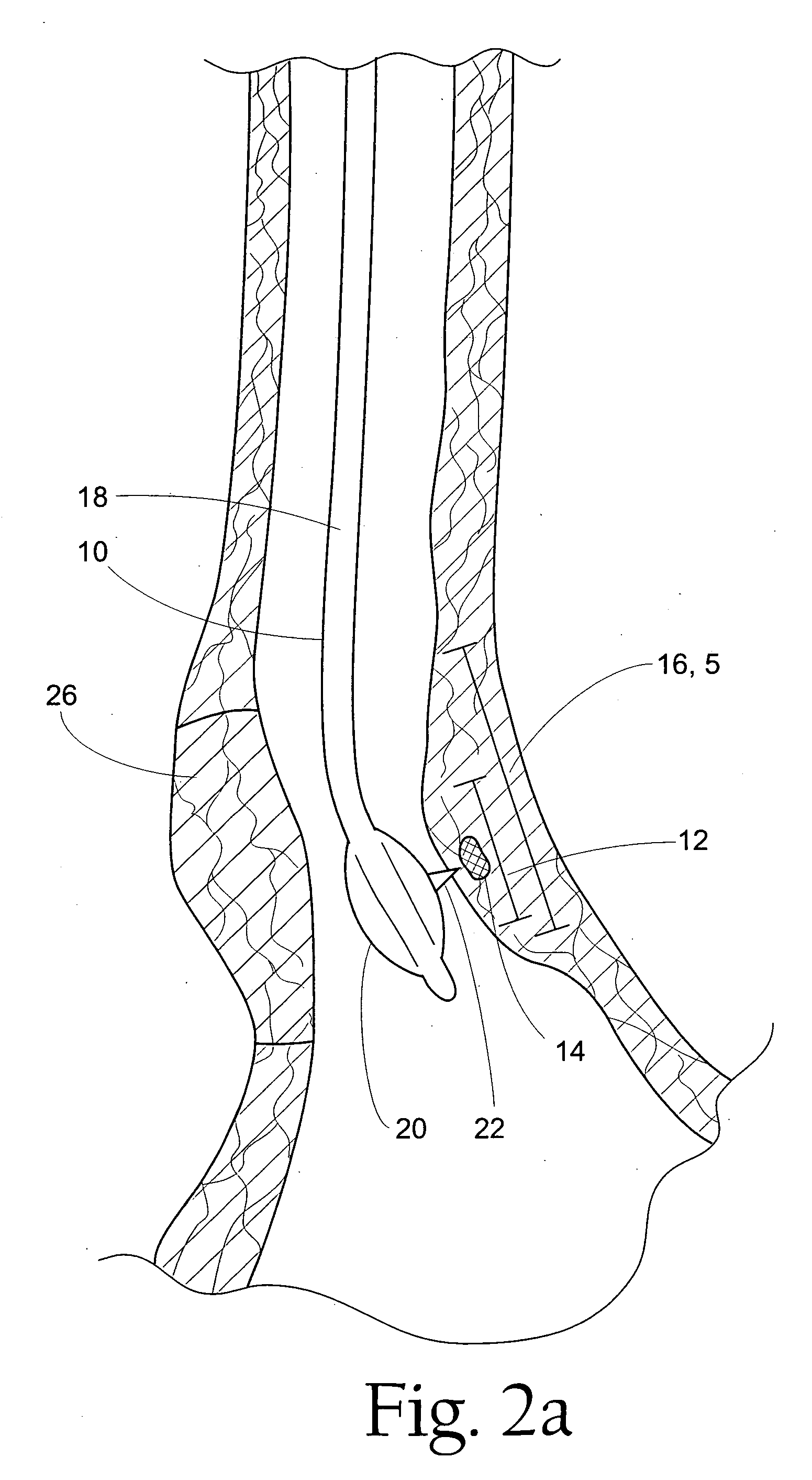Method to treat gastric reflux via the detection and ablation of gastro-esophageal nerves and receptors
a gastroesophageal nerve and receptor technology, applied in the field of gastroesophageal reflux treatment, can solve the problems of esophageal obstruction, significant blood loss and perforation of the esophagus, and more severe complications
- Summary
- Abstract
- Description
- Claims
- Application Information
AI Technical Summary
Benefits of technology
Problems solved by technology
Method used
Image
Examples
Embodiment Construction
[0071]FIG. 1 depicts the anatomy of the lower esophageal sphincter (LES) 5 and surrounding structures. The LES 5 consists of a thickened ring like structure of smooth muscle at the junction between the esophagus 6 and the stomach 7. The muscles of the LES 5 consist of both circumferential and longitudinal oriented muscle. Normally, the LES 5 is in a state of contraction, and functions to keep the acidic contents of the stomach from refluxing into the esophagus (via the generation of a pressure of 20-30 mm hg over stomach pressure). However during swallowing and also every three to four times and hour the LES relaxes for several seconds or longer in a phenomena known as transient lower esophageal sphincter relaxation (TLESR). In a person suffering from GERD, the frequency of TLSER is much higher rising as high as eight or more times in an hour.
[0072] The LES 5 is enervated with autonomic nerve fibers 8 that perform several functions. These include maintaining a resting tone to keep ...
PUM
| Property | Measurement | Unit |
|---|---|---|
| lengths | aaaaa | aaaaa |
| lengths | aaaaa | aaaaa |
| frequency | aaaaa | aaaaa |
Abstract
Description
Claims
Application Information
 Login to View More
Login to View More - R&D
- Intellectual Property
- Life Sciences
- Materials
- Tech Scout
- Unparalleled Data Quality
- Higher Quality Content
- 60% Fewer Hallucinations
Browse by: Latest US Patents, China's latest patents, Technical Efficacy Thesaurus, Application Domain, Technology Topic, Popular Technical Reports.
© 2025 PatSnap. All rights reserved.Legal|Privacy policy|Modern Slavery Act Transparency Statement|Sitemap|About US| Contact US: help@patsnap.com



